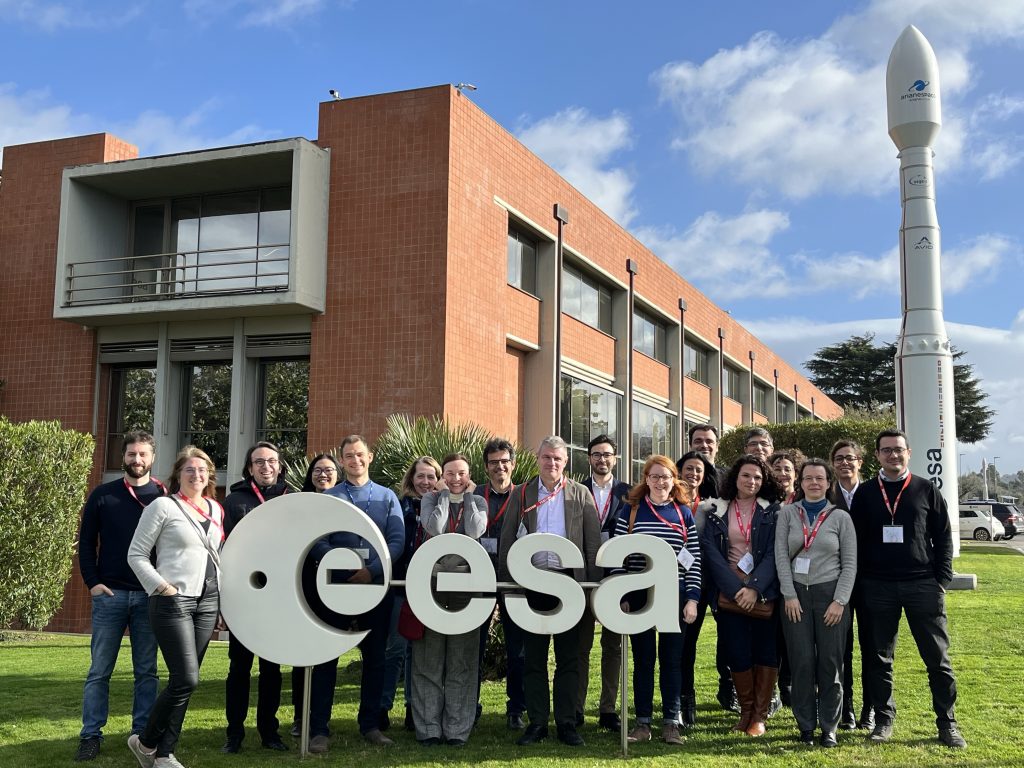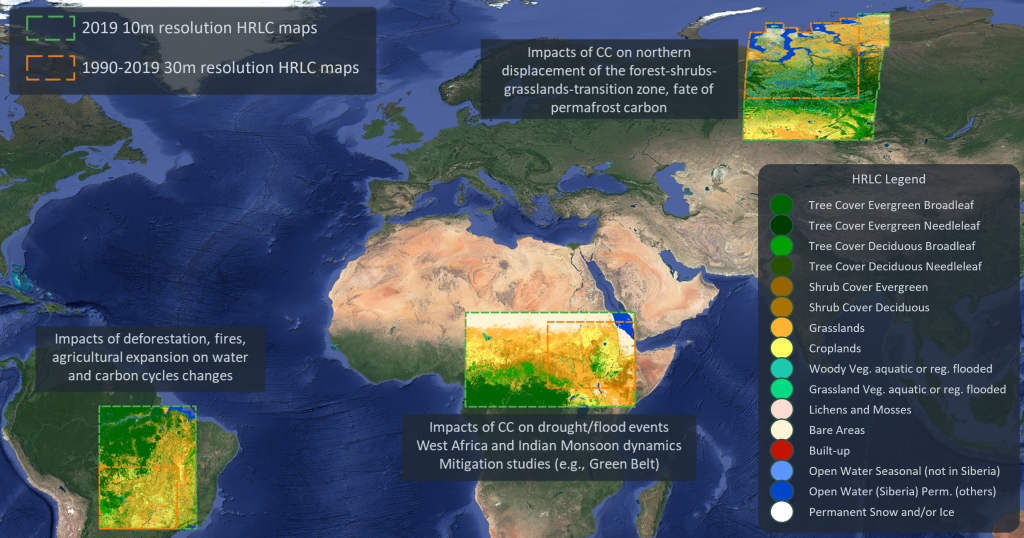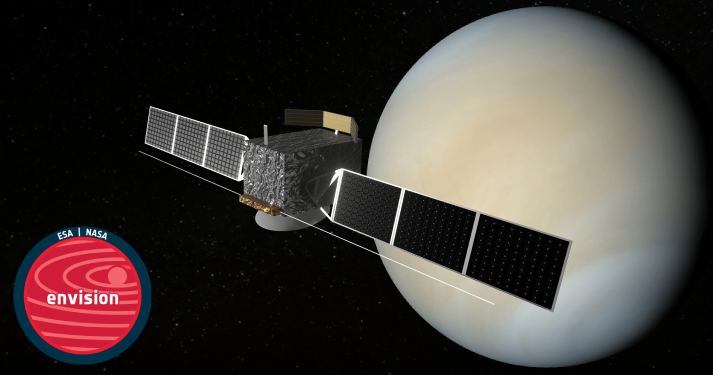On April 4, Khatereh Meshkini succesfully defended her PhD Thesis on “Advanced Methods for Land Cover Mapping and Change Detection in High Resolution Satellite Image Time Series”.
Congratulations to Khatereh!

On April 4, Khatereh Meshkini succesfully defended her PhD Thesis on “Advanced Methods for Land Cover Mapping and Change Detection in High Resolution Satellite Image Time Series”.
Congratulations to Khatereh!

Alpine glaciers are suffering the climate change. RSLab in collaboration with the Risk Prevention and Cue Service and the Geological Service of the Province of Trento and thanks to the support of the Helicopter Unit of the Permanent Fire Brigade of Trento, is conducting a campaign of measurements on the Marmolada glacier with a Ground Penetrating Radar to characterize the glacier bedrock and study the possibility to identify accumulation of water at the interface between ice and rocks as well as the presence of water in the ice column. After two series of measurements with high temperatures in the Summer 2023, in the past days we acquired data in winter thermal conditions with snow covering the glacier.
Some pictures and videos of the glacier during the campaign as well as some examples of media coverage can be found below.

The High Resolution Land Cover (HRLC) Essential Climate Variable (ECV) project developed under the Climate Change Initiative (CCI) of ESA started the Phase-2 activities with the Kick-off in ESA ESRIN, Frascati, Italy. RSLab leads the project that involves 11 international partners. In Phase-1 the team produced land-cover maps at 10m resolution of 2019 and time series of land-cover maps at 30m resolution every 5 years between 1990 and 2019 in regions located in Amazon, Africa Sahel and Siberia (see figure below). Yearly based land-cover-change maps have also been generated. These products will be presented in the next weeks (stay tuned).
More about the project:
The main goal of the HR Land Cover ECV project is to study in detail the role of the spatial resolution in the mapping of land cover and land cover changes to support climate modelling research. Accurate land cover mapping and land cover change detection are extremely important for a better understanding of the global climate system. Land cover and related changes are in fact both cause and consequence of climate change either when the change is human-induced or generated from natural events. This has been widely recognized by the scientific community and demonstrated by the previous phase of the CCI programme, focused on the generation of Medium Resolution (MR) land cover maps at global scale. Differently from the MR land cover CCI, which provided annual land cover maps at 300m resolution covering the period 1992-2015, the HRLC project aims at producing maps characterized by a spatial resolution of 10m/30m. Moving from 300m to 30m requires the definition of new data analysis and processing methods, reframing the perspective with respect to the MR project both from the theoretical and the operational view points.

Today the European Space Agency has officially approved the adoption of EnVision that thus will proceed to the next stage of development. Being adopted means that the study phase is complete and ESA commits to implementing the mission. This important milestone paves the way for the mission’s planned launch in 2031, marking a key step in exploring the mysteries of the planet Venus. The EnVision mission was selected by ESA’s Science Programme Committee on 10 June 2021 as the fifth medium-class mission in the Agency’s Cosmic Vision plan.
RSLab plays a key role in the mission, with Prof. Lorenzo Bruzzone serving as Principal Investigator for SRS (Subsurface Radar Sounder). SRS is a radar sounder designed to explore the first hundreds meters below the Venusian crust uncovering subsurface geology and surface properties. SRS is the first radar sounder involved in a mission to Venus. It will provide insights into the origin of several unusual Venus geological features such as pancake domes and complex ridged terrains (tesserae), and analyze stratigraphy, volcanic features and burried craters. Moreover, the instruments has also the capability to detect possible presence of lightning in the Venus atmosphere, events that could be associated to the presence of volcanic eruptions.
Below some samples from the coverage of the national, international and local media.

RSLab contributed to a research published on Nature Communication that gained visibility on the international media. This research produced a new lunar surface chemical map by using artificial intelligence (in particular deep learning) and new samples taken by the lunar-sample-return mission Chang’e-5 (CE-5) integrated with Apollo and Luna samples as ground truth. This is a cooperation among different Chinese Universities (with the leading scientist who spent part of the PhD and a postdoc at RSLab), University of Trento and University of Iceland.
See below for more details on the media reports.
Congratulations to Giulio Weikmann for the best student paper award at SPIE Remote Sensing 2023 conference in Amsterdam: “A class-driven hierarchical ResNet for classification of multispectral remote sensing images”.

The RSLab activities and projects related to remote sensing for forest monitoring have been the focus of a TV report on the national RAI 3 TG Leonardo and on the RAI TGR . The report addresses the activities developed by using LiDAR sensors and multispectral/hyperspectral scanner on board of aircrafts, drones and satellites. Particular attention is given to the research in progress based on the use of artificial intelligence techniques applied to the hyperspectral images acquired by the PRISMA satellite of the Italian Space Agency.
More details at the links below.
A second campaign of data acquisition on the Marmolada glacier with a ground penetrating radar mounted on an helicopter was conducted on Friday August 25th by RSLab in cooperation with the Civil Protection of the Provincia Autonoma di Trento in one of the hottest day of the year (see the videos below taken on the glacier during the flight).
The goal of the campaign is to analyze the sub-surface of the glacier in an extreme condition on the water content given the series of days showing temperature sharply higher that the mean of the past period. These data will be processed in the next weeks together with those acquired in early July when the temperature conditions were within the mean of the summer. Another campaign is planned in the winter. All the data will be jointly analyzed to reconstruct the volume of the glacier and to assess the capability of the radar and of the related signal processing techniques to estimate the amount of water present in the subsurface and to identify pocket of water potentially critical for the stability of the ice.
More details bellow from selected national and regional media news.
RSLab is conducting a series of tests on the Marmolada glacier with a ground penetrating radar (GPR) mounted on an helicopter to study the feasibility to estimate the properties of ice as well as the possible presence of water in the subsurface.
The study is aimed to understand if these variables can be estimated in a reliable and automatic way by using advanced signal processing and machine learning techniques applied to the data acquired by a flexible low mass GPR that could fly on a drone. The final goal is to provide an additional tool to civil protection for monitoring the status of the ice after the tragic event occurred on the Marmolada glacier the past year.
The activities in progress have been been presented on the RAI TGR news. See here starting at minute 15:10.